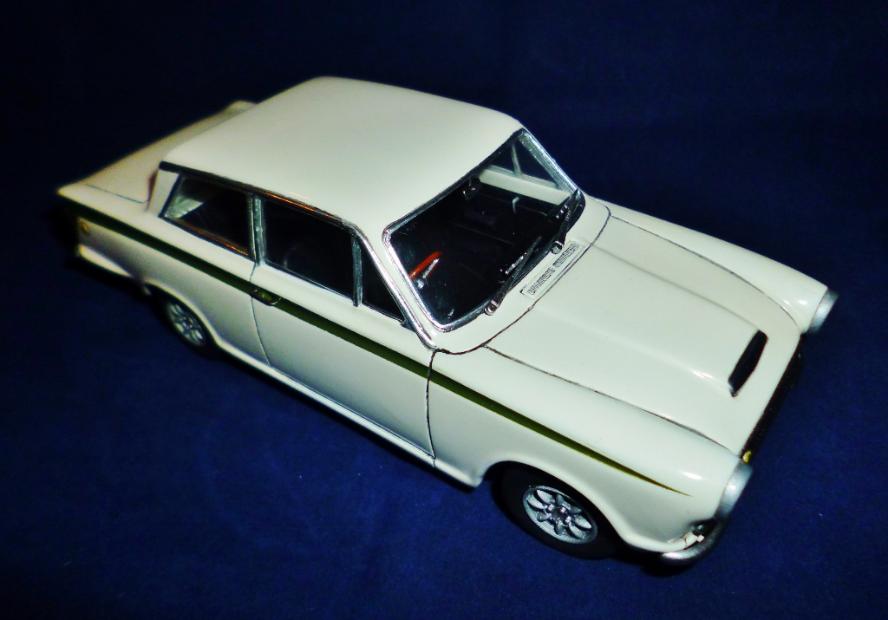
1963 Lotus Cortina Mk1
One of the fastest selling cars in the history of the British motor industry the deceptively ordinary 1962 Cortina was the first of a line that endured until 1982. Outwardly a lively, well-mannered family saloon, it spawned two potent derivatives, both of which appeared in 1963. The GT was mechanically closely related to the standard car, but the exciting Lotus Cortina was powered by a Ford-based engine, developed by Cosworth and tuned by Lotus.
Rapidly outgrowing its garden shed background status Lotus was in the market for a new high-performance engine for its road cars, primarily because Coventry Climax engines were expensive. Obviously, an in-house engine unit would be most economical but what to base the new power unit on? During 1961 Colin Chapman contacted his friend Harry Mundy, the designer of the Coventry Climax engine, and asked him to design a twin-ohc version of the Ford Kent engine, but when Ford released the five-bearing 1,499cc, 116E series engine in 1962 the team refocused on this engine. Keith Duckworth (of Cosworth fame) was also involved waving his magic tuning wand over the engine resulting in the Lotus Cortina featuring an engine of 105bhp which in race tuned form could put out 145bhp and propel the racing saloons at speeds in excess of 105mph.
The timing was great for Ford’s USA parent firm who had opened the 1960s with the idea of making the Brand appeal to the sporting market, building upon its already well establish, but rather limiting, family car image.
Using Ford’s global “Total Performance” mantra, Ford Britain, at Dagenham, were more than happy to work with Lotus as any success would obviously reflect on them, and any failures could be displaced onto Lotus. It was also beneficial because Ford, both in Europe and Australasia, was looking for a better way of selling road cars than trying to suggest they were comparable with the US derived Falcons and Galaxies competing for Ford at the time.
When the Cortina had such a great response from the buying public it seemed a great idea to look for a partner to turn this popular car into a sporting saloon. Both markets fuelling each other to ever better sales levels.
About the same time Colin Chapman had also been looking for a backer to help him improve his production facilities and had suggested to Ford that they might consider backing a project to produce a steel-bodied Lotus Type 26, or Elan as it is better known outside of the Lotus design shop. Ford declined, but Walter Hayes of Ford asked Colin Chapman if Lotus would consider fitting their new engine into 1,000 Ford saloon cars so Ford could homologate a Group 2 saloon racing car. Negotiations led to an agreement were the racier elements of the Elan would be mated with the Cortina. The result wasn’t exactly what Chapman had wanted but it had such a great by-product he had to say yes. Lotus reworked the Cortina and in return not only got a new factory out of Ford to build it in, but an inhouse Ford advisor to help get the production process up and running as soon as possible. Lotus was now more than a mere Garagista, and well on the way to becoming a real volume car producer.
It seemed that the stars must be aligning for Lotus and Ford, and the Cortina itself. Already a state-of-the-art chassis, designed by Ford UKs Dennis Roberts and Don Ward in a pioneering structures laboratory, the lightweight unitary body shell had all the latest in stress-engineering calculations and principles gathered from supersonic aircraft design and full testing with equally state-of-the-art aerospace stress-analysis. Then Colin Chapman and the Lotus design team were allowed to do their own redesign to extract all the sporting potential hiding in the 2-door Cortina saloon’s orthodox appearance.
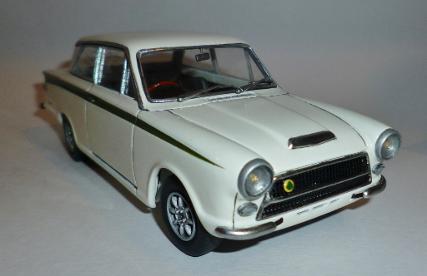
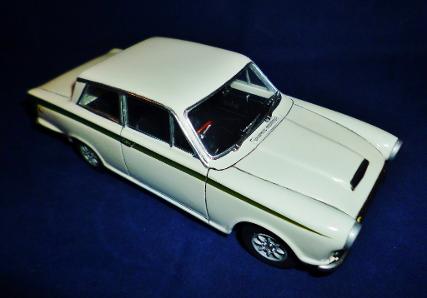
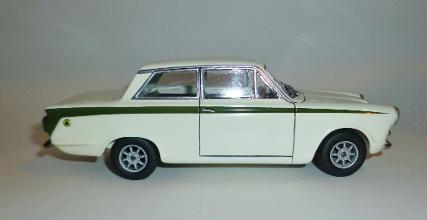
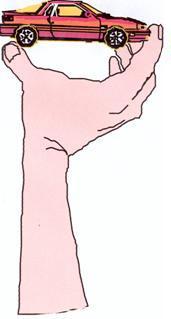

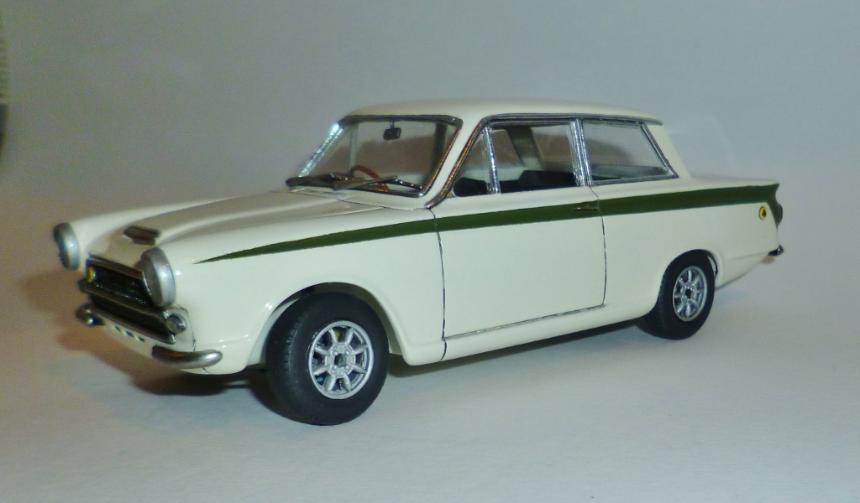
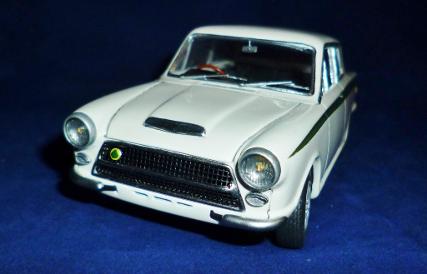
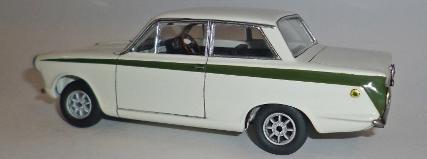
Internally the project was known as the Lotus 28, in between the Lotus type 27 Formula Junior racing car and the Lotus type 29 Indycar. The eventual name depends on whether you are a Ford aficionado or a Lotus fan. Ford called the car the Ford Cortina Lotus, everyone else called it the Lotus Cortina; which, in truth, rolls off the tongue much more easily.
Development was huge, much more than a simple engine upgrade. However, some of the redesigns caused more problems than they were actually worth. The Cortina shell was already as light and as strong as it needed to be within the current design frame. Chapman had seen the Cortina as the usual overweight production car that needed to be lightened but the car was already a far more expertly designed than Chapman could conceive of.
Colin Chapman felt the leaf spring rear suspensions was awful and insisted on replacing it with a radical A-frame bracket attached to the top of the differential housing, vertical coil spring-over-damper units and trailing links to help locate the axle ends. Great for feel and traction on the track but they put unexpected loads through the chassis and diff’ case needing additional strengthening in the boot and engine bay, displacing the battery from its original position, and a redesigned aluminium diff’ casing, the original cast iron diff’ suffered under twisting motions it wasn’t designed for causing leaks and differential gear breakages. Any weight saving gained through the use of aluminium opening panels etc. was lost again with the additional stiffening; but at least weight distribution did actually improve. While Lotus made a tidy sum in retro-fitting the bracing in the boot and engine bay, the costs incurred by Ford garages in rectifying the warped chassis problems in the cars already sold under the Lotus Ford banner, prompted Ford to insist on a swift return to leaf spring ideology which made the cars much more reliable again too. The full front grill of the aero-flow version is a good indicator of the point at which the suspension reverted back to the leaf-spring rear suspension style.
Lotus did do a good job of reducing the ride height though. New shorter front struts and forged steel lower control arms helped reduce negative camber making the steering lighter and the lower centre of gravity also helped the handling and feel fed back from the wider 13X5.5inch steel wheels (alloys came a little later). Lotus also uprated the braking system with 9.5in Girling front discs and larger servo-assisted rear drums. After-all, you have to brake more efficiently if you have more engine power.
Before Lotus had their engine building facilities at Hethel in 1966 the Lotus sports engines were built by J. A Prestwich of Tottenham and, later, Villiers of Wolverhampton.
Overall, the engine concept was simple, a Lotus designed aluminium twin-cam head was mated to a stock Ford block; but nothing is ever that simple. The Ford blocks had to be specially selected to ensure they would be able to contain the additional pressures of the uprated engine after their bores were increased and twin ohc head had been fitted.
The original engines were designed to fit the 1500cc competition classes but was also later pushed up to 1,557cc to race in the FIA’s European under 1.6ltr class. Distributor, fuel and oil pumps all continued to be run off of the cams. In order to denote the particular engine types Lotus used a colour system for the rocker covers. Normal road going Lotus engines had blue rocker covers, higher rated special edition Cortina engines had green covers.
Lotus Cortina engines had their power passed through an 8.0in (200 mm) diaphragm-spring clutch to a special close-ratio four-speed Ford gearbox, comprising of components modified by Colin Chapman, including a lighter alloy cast housing. The ultra-close gear ratios proved ideal for the testing/race track or on open roads but proved awkward in commuter traffic situations giving the clutch a serious workout. Ratios were eventually adjusted to better handle the day to day needs of the driver.
Lotus Cortinas are instantly recognisable from their classic Ermine white and Sherwood green livery, accentuating the panel lines and setting a trend which other racing teams would also use despite adopting their own particular colours. Ford actually supplied the white body shells and Lotus added the green stripe, only one Lotus Cortina ever had a different coloured stripe, blue, because the customer was superstitious about green (to this day some people believe green to be an unlucky colour for a car). Ford did later build a few red Cortina Lotus cars especially for racing teams, think Alan Mann racing and their classic red and gold livery. New, or rather repurposed van, quarter bumpers were added at the front and the familiar round Lotus badges were added to the right side of the radiator grille and on the rear wings.
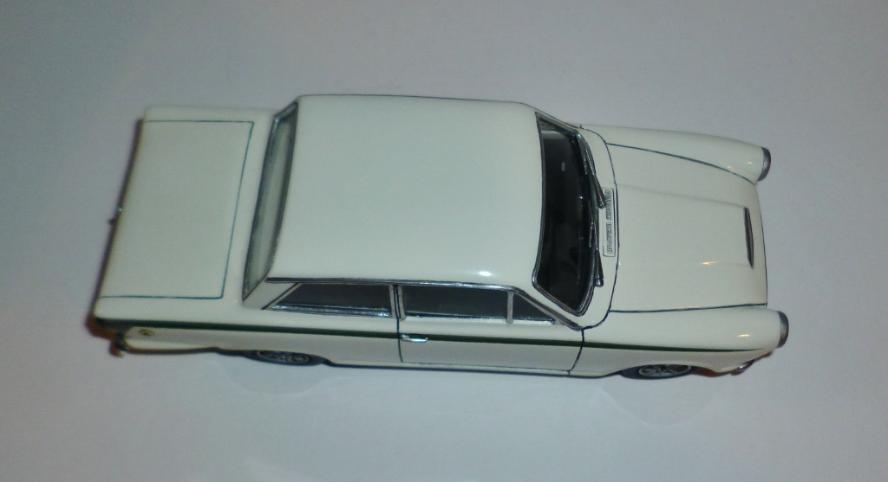
Ford first presented the Lotus Cortina to the Press in January 1963, although most of the informed press were well aware that Colin Chapman had been working in close collaboration with Ford on several new projects. Newspapers and magazines gave rave reviews and the British car owners, used to heavy cars with little more than ‘adequate’ engines, flocked to buy the transformed Lotus Cortina. It was clear to all that Lotus had taken Fords average saloon car and created a hot product, in today’s motoring ideology, this was a track day car which happened to be usable for the everyday journeys too.
However, the fast development time of the car did cast up a few problems, like the aforementioned gear ratios, differential issues and warping in the body. These were compounded by reports of confused Ford dealerships fitting incorrect parts during routine services.
In late 1964 the aforementioned aeroflow, or airflow for those who prefer, the second incarnation of the Lotus Cortina featured a wider front grill which encapsulated the front indicators/side light units, as well as vents on the rear pillars all in keeping with Fords own upgrade which meant drivers no longer had to have windows open to get any fresh air. At the same time all Consul badging was dropped.
Internally the Cortina now had several bespoke Lotus items including a new instrument panel with round instruments, a black dash’ with chrome detailing including the lotus yellow and green badge changing to black and silver to match. Seating became more akin to the GT seats but with Lotus patterning and the door card patterns changed too.
These visual cues belie a number of other changes, including more mainstream Ford parts, most notably the return to the far more durable leaf spring and radius arms rear suspension which negated the need for This all the bracing tubes in the boot freeing up much needed space for luggage or for a safer internal smaller racing fuel tank.
Such changes meant the car was now less specialised, although the racing teams could still call on the special parts, but much more reliable. Equally they had no detrimental effect on the cars speed or handling. Ford now had a sports saloon which could compete on the race track and be sold to the public as an affordable alternative to Alfa Romeos in the European market.
Lotus Formula I success and inroads into Indy racing prompted Ford to start bringing the Lotus-Cortina into the US, Ford would very soon be struggling to meet an exploding global demand for the Cortina as the man in the street sat in his Cortina contemplating his imagined successes on the racing circuit.
The Cortina, in Lotus and GT guises was now competing against the latest European, US and Japanese cars in saloon racing and by association built the image of both Ford and Lotus, a win-win for all parties.
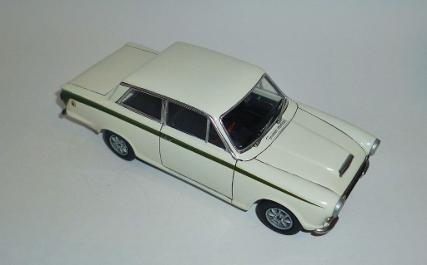
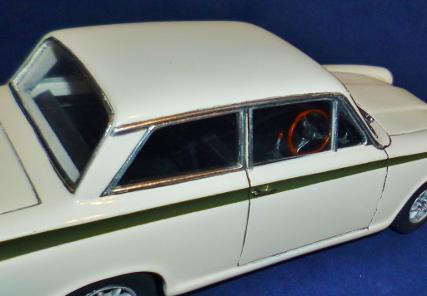
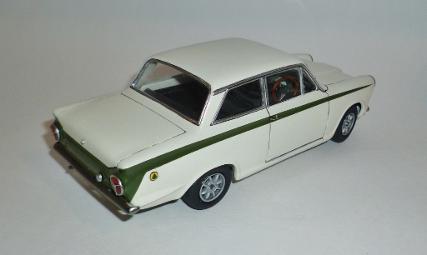
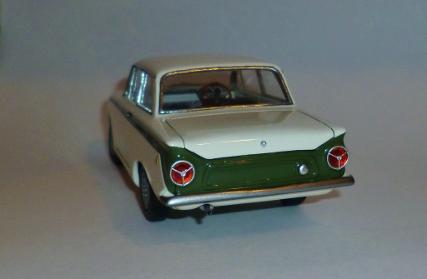
Ford first presented the Lotus Cortina to the Press in January 1963, although most of the informed press were well aware that Colin Chapman had been working in close collaboration with Ford on several new projects. Newspapers and magazines gave rave reviews and the British car owners, used to heavy cars with little more than ‘adequate’ engines, flocked to buy the transformed Lotus Cortina. It was clear to all that Lotus had taken Fords average saloon car and created a hot product, in today’s motoring ideology, this was a track day car which happened to be usable for the everyday journeys too.
However, the fast development time of the car did cast up a few problems, like the aforementioned gear ratios, differential issues and warping in the body. These were compounded by reports of confused Ford dealerships fitting incorrect parts during routine services.
In late 1964 the aforementioned aeroflow, or airflow for those who prefer, the second incarnation of the Lotus Cortina featured a wider front grill which encapsulated the front indicators/side light units, as well as vents on the rear pillars all in keeping with Fords own upgrade which meant drivers no longer had to have windows open to get any fresh air. At the same time all Consul badging was dropped.
Internally the Cortina now had several bespoke Lotus items including a new instrument panel with round instruments, a black dash’ with chrome detailing including the lotus yellow and green badge changing to black and silver to match. Seating became more akin to the GT seats but with Lotus patterning and the door card patterns changed too.
These visual cues belie a number of other changes, including more mainstream Ford parts, most notably the return to the far more durable leaf spring and radius arms rear suspension which negated the need for This all the bracing tubes in the boot freeing up much needed space for luggage or for a safer internal smaller racing fuel tank.
Such changes meant the car was now less specialised, although the racing teams could still call on the special parts, but much more reliable. Equally they had no detrimental effect on the cars speed or handling. Ford now had a sports saloon which could compete on the race track and be sold to the public as an affordable alternative to Alfa Romeos in the European market.
Lotus Formula I success and inroads into Indy racing prompted Ford to start bringing the Lotus-Cortina into the US, Ford would very soon be struggling to meet an exploding global demand for the Cortina as the man in the street sat in his Cortina contemplating his imagined successes on the racing circuit.
The Cortina, in Lotus and GT guises was now competing against the latest European, US and Japanese cars in saloon racing and by association built the image of both Ford and Lotus, a win-win for all parties.
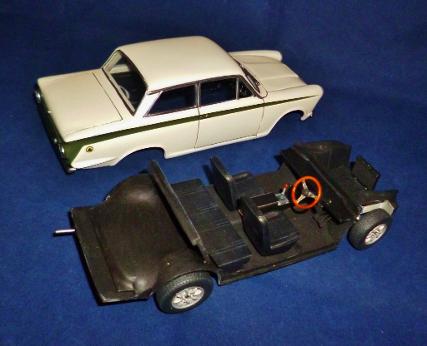
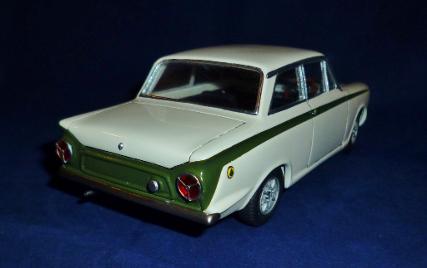
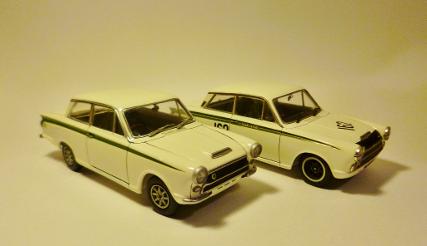
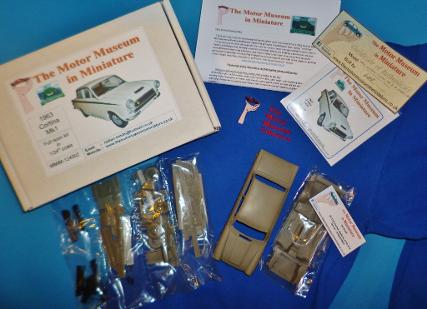
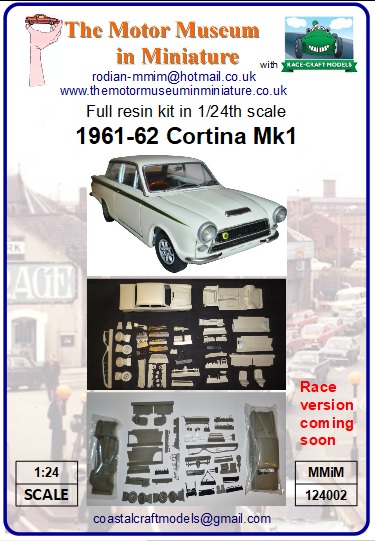
The Cortina is regarded as a copybook exercise in engineering and, above all, product planning. Lotus input in the Cortina was expensive making the UK price £1100 yet the original contract of 1000 examples were sold out in no time; and the project tie up was so successful it continued into the MKII Cortina as well.
Many lessons were learned by Ford, Lotus and the buying public. Lotus learned Ford of Britain had some very talented body designers, Ford learned that Lotus and Cosworth were well worth investing in for the future and the public learned that they didn’t need to be mega earners to afford a sporting car with a proven pedigree that was still a practical family car.
Lotus emerged as a volume producer not just a small-scale racing outfit. The Lotus Cortina’s impressive competition reputation and huge sales announced Lotus as a new threat to the Sports car producers such as Alfa Romeo, BMW and Lancia; and even made Mercedes and Ferrari take note.
Ford and Lotus parted company after around 6 years but seeds of greatness had been sown. In time, Lotus would turn from the Elan to the mid-engine Europa and then the Esprit that was so good even James Bond drove one. Ford would go on to use Lotus inspired engines and drivetrains in the Escort series that would also be a world beater in its own right.
If the partnership of the two firms didn’t actually last all that long, the effects it had brought the world some great cars.
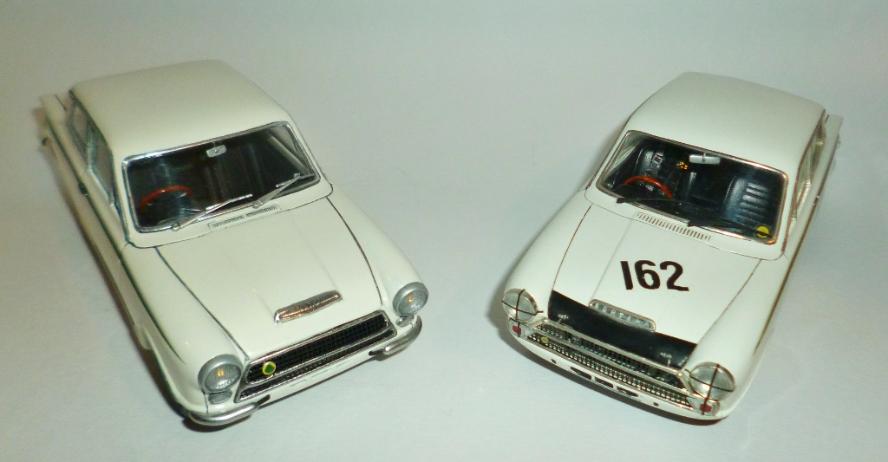
Although there have been many models of the Cortina as diecasts, toys, slotcar racing and smaller scale model kits for some reason a 1/24th scale version has never been made on a mass production level. Ian built a Cortina in 1990s from a South African Scalekraft transkit on an ESCI Escort chassis, but this transkit was quite short lived and is no longer available. Air-Trax also did a Cortina kit using some Tamiya Lotus Seven parts which isn’t easy to track down either. So, when Ian was offered a resin Cortina body he decided to buy it with the aim of creating a new kit for everyone; took a long time to get done. Said body was totally reworked by Ian and the rest of the parts scratch built so this resin model kit could be produced.
Kit MMiM 124002 is the second model kit released by the Motor Museum in Miniature in cooperation with Coastal Craft kits it went on sale at the 2019 IPMS (UK) Scale Model World show.
Ian built a pair of these models in early 2020, one for Rod and one for our friend Martin Blundell at Coastal Craft. The model is finished with Zero Lotus Cortina paint set ZP-1383 Zero clear lacquer. Humbrol enamels and acrylic paints from Citadel and Deco-Art have been used for the interior and detail painting. Bare metal foil, AlcladII chrome and Molotow liquid chrome pens were used for the chrome work. This model is exactly what you get in the box.
RETURN TO :-

